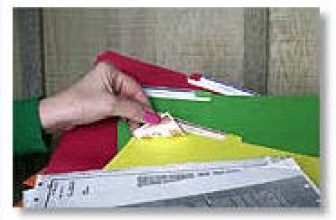
U.S. Hospital adopts RFID to realize asset self-management
[ad_1]
The Memorial University Medical Center in Port Savannah, Georgia, USA is a 500-bed hospital. The center now uses an RFID real-time location system to track and utilize the hospital’s mobile devices to achieve more efficiency at a lower cost Asset management.
“I joined the center in 2004, and at the time we could not clearly understand the status of the assets,” said Al Hardy, the hospital’s procurement and asset management representative. “We could not track the location of equipment, maintenance costs and utilization.” The high equipment cost even makes the center unable to make ends meet and fall into debt.
Hardy learned about RFID technology as early as when he was in the military. He was a clinical engineer in a US military hospital. When he checked the warehouse of the hospital, he noticed a set of RFID systems that had not yet been implemented. Although the system was not applied in the end, it inspired Hardy’s keen interest in RFID technology.
When he joined the Memorial University Medical Center, he began to study how to integrate the RFID system to implement a new enterprise asset management system. The biggest problem he faces is how to pay for the cost of the system, because the hospital is already in debt and cannot afford the additional expenses.
Hardy and other members of the asset management team studied whether they could implement an RFID system by themselves instead of hiring another contractor. When they counted the cost of the RFID system, they found that it was expected to be cheaper, even including the cost of workers.

U.S. Hospital adopts RFID to realize asset self-management
The next step is to study which RFID system to use. The team reviewed related articles, consulted some hospital real-time positioning system providers, and contacted other hospitals that implemented similar systems. The team found that each RFID system has achieved the expected goals, but each has its own problems and focuses. The Memorial University Medical Center mainly considers two points when choosing its own application system: whether it meets the actual needs and whether it is within the center’s budget.
Based on the above two factors, the team screened out two options: 900 MHZ active RFID tag system and ZigBee-based active tag system. The team finally adopted the 900 MHz system because the system is more in line with the hospital’s requirements and meets the return on investment required by the hospital.
The center installed the system in March of this year. However, there was a delay when the manufacturer sent 1,900 tags (for infusion mercury, squeezing and breathing equipment), which delayed the system’s activation time.
The system was officially launched in May and covers 75% of the hospital’s area (1 million square feet in total). In the past, the hospital had to outsource the work of asset positioning and bringing to the required area to a third party; now, the hospital can hire workers to complete this work on its own, reducing expenditures.
Employees can view the hospital floor plan or the location of a single device on the hospital’s local area network. They only need to enter an asset number to locate the device in the hospital’s RTLS system coverage area. They also check which devices are available in a particular area, or filter devices by category. Hardy estimates that the hospital can save $400,000 a year by self-managing assets without resorting to third parties.
However, this system also has some problems when it is installed and tested. During the initial installation, the system sometimes cannot pinpoint the layer number of the device. The manufacturer adjusted the system to solve this problem. Another problem occurred in the old X-ray area, where the existing anti-ray walls interfered with the RF transmission of RFID devices.
The center is considering expanding this system to cover other areas of the hospital, such as research laboratories, and label other types of equipment. The group established several standards for the type of labeling equipment, such as cost, equipment use department, and whether to improve management and patient turnover.
Hardy said, “Now we can use the RTLS system to determine the utilization rate before replacing equipment or purchasing new equipment, and how long it took to repair the equipment, and whether we need to spend the money.”
[ad_2]




